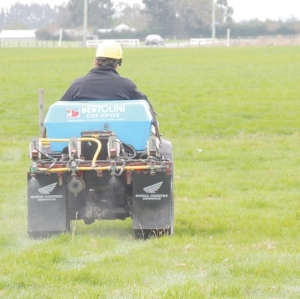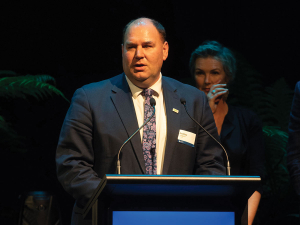Agronomist Bronwyn Charteris told the Methven conference KWM31 has no vernalisation requirement, hence has a wide drilling window, and produces consistently high yields with a good disease resistance profile, thousand grain weight and specific weight.
“We think this variety has the potential to replace Sage and Morph,” she said, running delegates through PGW’s stable of wheat and barley varieties.
KWM31’s irrigated and unirrigated yields rate at 108% and 111% of control means, compared to Morph’s 106 and 105% respectively. A limited amount of seed will be available in 2014.
Meanwhile in the spring barleys, Charteris says Garner looks a good replacement for feed cultivar County.
Her cereal breeding colleague Steve Shorter outlined to delegates just how much work goes into bringing a new cereal cultivar to market. “You can get from first cross to a variety in as little as seven years but that’s exceptional: typically it’s more like 10 years.”
Huge numbers of first crosses are made from which breeders attempt to identify progeny with potential advantages.
“Most of the combinations turn out worse than you started with. It’s only that one in one thousand that offers something better.”
In barley, what grows well in Europe generally does well here but European wheats don’t adapt as readily to New Zealand’s subtly different growing conditions. It’s a factor in average annual yield gains attributable to breeding, as opposed to agronomy, of 0.6% in barley compared to 0.4% in wheat.
“We’ve now got lines [of wheat] specifically adapted to New Zealand… this is where we think the next big advance in wheats will come from,” said Shorter.
Tom Sherratt, a cereal agronomist, noted how UK wheat yields have plateaued. “The challenge to you [growers] and to us agronomists is we don’t want to hit a similar yield plateau here.”
Tailoring seed rates to variety and drilling date, nitrogen to soil availability, and pesticides to seasonal pressures and cultivar resistance is the key to keep pushing the agronomic contribution to yield, alongside the plant breeding contribution, forward, he says.
Precision agriculture specialist Jemma Mackenzie, of Agri Optics, outlined how agronomy can now be tuned not just to the cultivar and paddock, but to the variations in the crop and/or underlying soil across a paddock. “Variable rate application is really what precision agriculture is about,” she stressed.
For example, variable rate liming to level pH following grid soil sampling could save $90/ha compared to a traditional one paddock, one rate approach.
Besides product savings, “it’s about evening up that pH variability so you’re not going to suffer yield loss as well.”
Variable rate irrigation avoids over- and under-watering, with similar cost savings and yield gains.
With sprays and fertilisers, on-the-move sensing of crop colour can be used to tune inputs.
The final piece in the jigsaw is managing the mass of data today’s technology can collect on crop and soil status. “Data management is really about tying it all together.”
Mackenzie recommended growers start with the “low hanging fruit” when moving into precision agriculture. “Whether it be fertiliser costs or water costs, it’s certainly not hard to integrate these things into your New Zealand farming system. And smart farming systems is the way New Zealand needs to head – is heading – whether we like it not.”

















